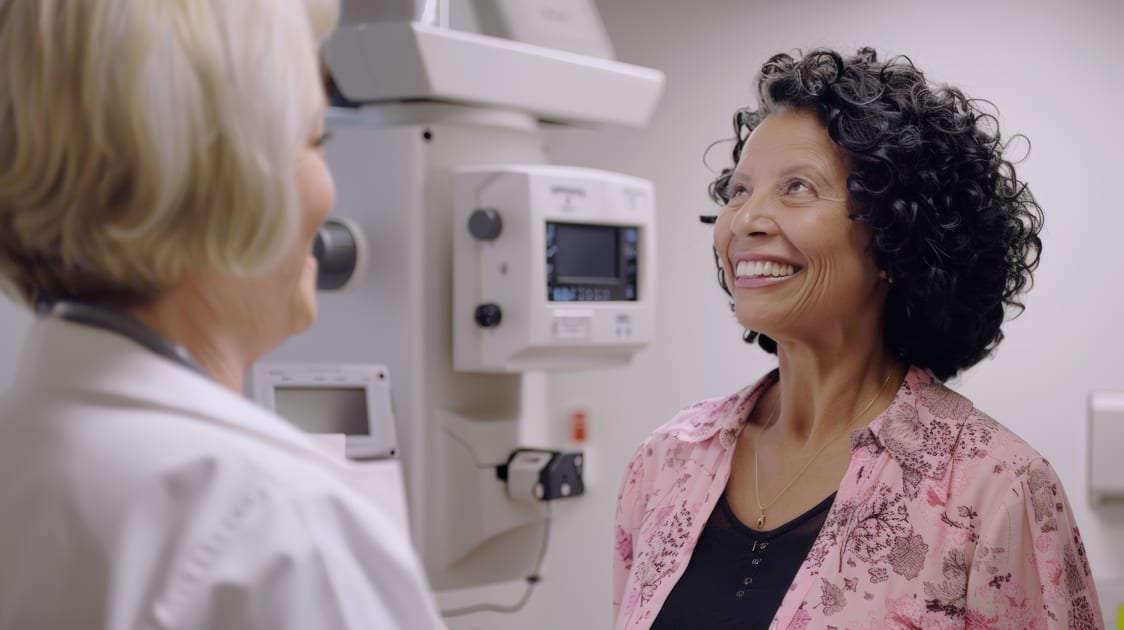Older Women May Benefit From Regular Mammograms < Yale School of Public Health
For women aged 40 to 74, a mammogram every year or every other year is the standard recommendation in screening for breast cancer.
Regular mammograms reduce the risk of late-stage breast cancer and improve breast cancer survival rates. But the guidance has been less clear for women aged 75 and older.
A new study by researchers at the Yale School of Public Health (YSPH) provides evidence that even in older women, continuing to get regular mammograms is associated with earlier stage cancer at diagnosis and lower rates of breast cancer mortality.
The researchers looked at data for over 13,000 women age 70 or older diagnosed with breast cancer and found that women who had had regular mammograms before diagnosis had better health outcomes, including earlier-stage diagnosis and better survival rates. The same appeared true of women aged 75 and older.
“What our study adds is evidence that regular screening, even in older women, may still be able to detect disease at earlier stages when it is associated with better cancer-related outcomes,” Dinan said.
But the findings come with a caveat.
The benefit of more early-stage disease diagnoses, Dinan said, must be weighed against the risk of overdiagnosis — and that balance likely varies among individual women over age 70.
“Our results are consistent with guidelines that suggest that older women may continue to consider screening with appropriate personalized decision making,” Dinan said.
Our study adds evidence that regular screening, even in older women, may still be able to detect disease at earlier stages when it is associated with better cancer-related outcomes.
Dr. Michaela Dinan, Yale School of Public Health
Mammography and overdiagnosis
While mammography is a powerful tool for early cancer detection, it has its downsides. Overdiagnosis is more common in older women and can lead to unnecessary biopsies, scarring, infections, and emotional distress. In addition, some breast cancers in older women are later shown to be insignificant or become overshadowed by other health problems, such as cardiovascular disease.
All 13,000 women included in the Yale study were diagnosed with breast cancer via mammogram between 2010 and 2017. The dataset combined Medicare claims with records from a tumor registry called Surveillance, Epidemiology, and End Results (SEER), maintained by the National Cancer Institute.
To reduce the chances of skewed results, the researchers took into account a variety of factors, such as a woman’s age at diagnosis, race, ethnicity, marital status, and year of diagnosis plus indicators of poverty, including eligibility for Medicaid in addition to Medicare. They also considered frailty and health problems as well as measures of health-promoting behaviors, including influenza vaccination and visits to primary care providers.
Just under one-third of the women in the study had a later-stage cancer upon diagnosis. About three-quarters had a mammogram in the five years before diagnosis, and prior screening was associated with better outcomes.
According to the study, having had a prior mammogram reduced the odds of a later-stage diagnosis by roughly half and the risk of dying of breast cancer by about one-third.
Similar results were shown for women aged 75 and older: prior screening was associated with significantly lower odds of later-stage diagnosis and death.
The number of previous mammograms also appeared to make a difference. Women who had previously had three or four mammograms had about one-third less breast cancer mortality compared to women who had just one prior mammogram.
While the results add to previous evidence in favor of continuing routine mammography once women pass the age of 74, the study had limitations.
Because the study was limited to specific sets of data, the researchers were unable to determine whether other factors such as socioeconomic status or regular engagement with a primary care provider influenced individual health outcomes. The study also focused on the most common form of breast cancer so the results might not apply to other breast cancer types.
The authors note that the risks and benefits of breast cancer screening are complex and the current study, while informative, should not be viewed as decisive in determining whether older women should continue to receive biannual screening. That decision should be made by each individual in consultation with their health care provider.
The study appears in JAMA Network Open. Funding for the research came from the American Cancer Society and a Yale Cancer Center Pilot Award for Research on Cancer Equity.
In addition to Dinan and Huang, other authors of the study were Sarah J. Westvold, Pamela R. Soulos, and Jane Fan of the COPPER Center; Eric P. Winer and Maryam B. Lustberg, both of whom are affiliated with Yale Cancer Center and the Yale School of Medicine (YSM) Department of Medical Oncology; Haiying Zhan of YSM’s Department of Pathology; John Lewin of YSM’s Department of Radiology and Biomedical Imaging; and Timothy J. Robinson of YSM’s Department of Therapeutic Radiology.












